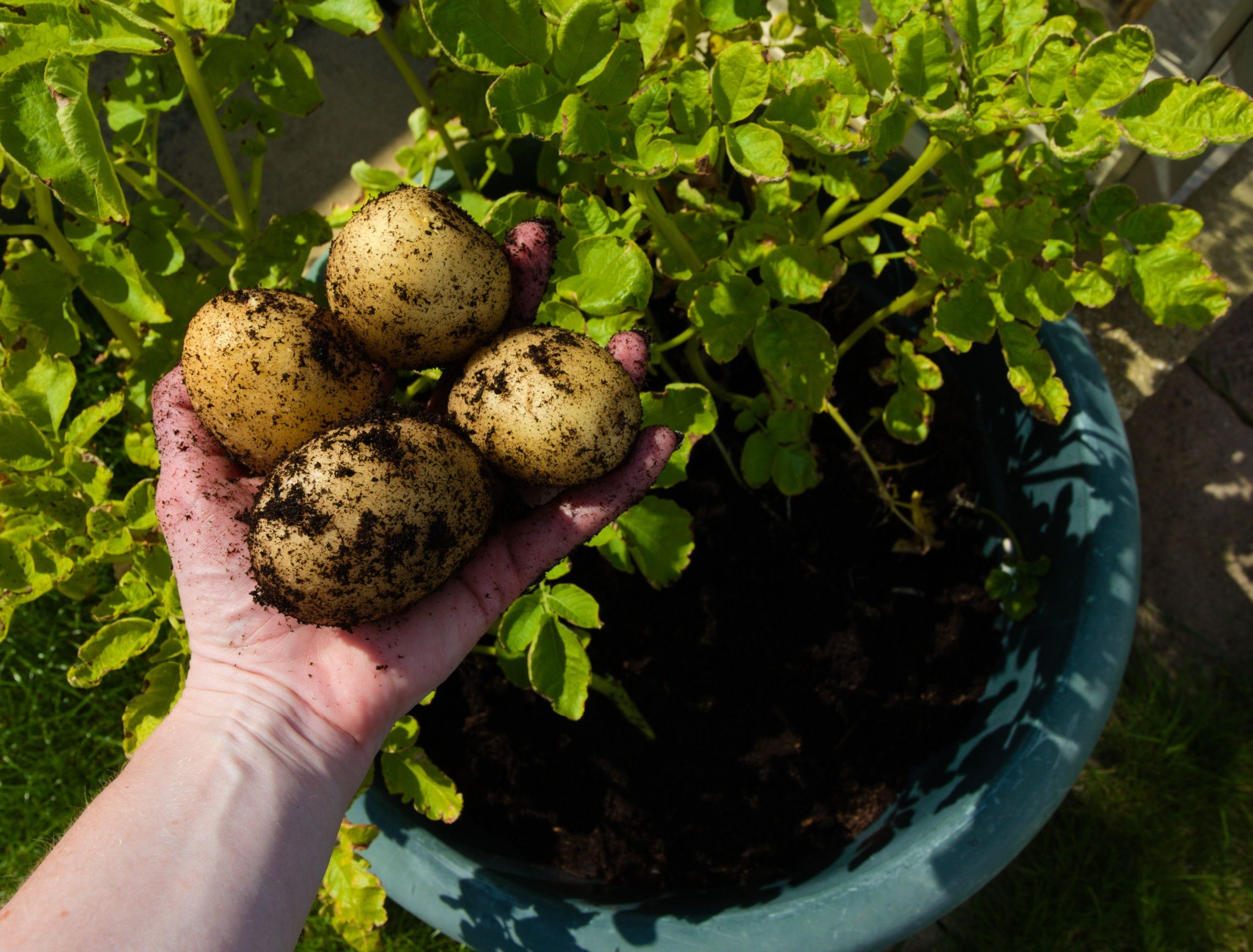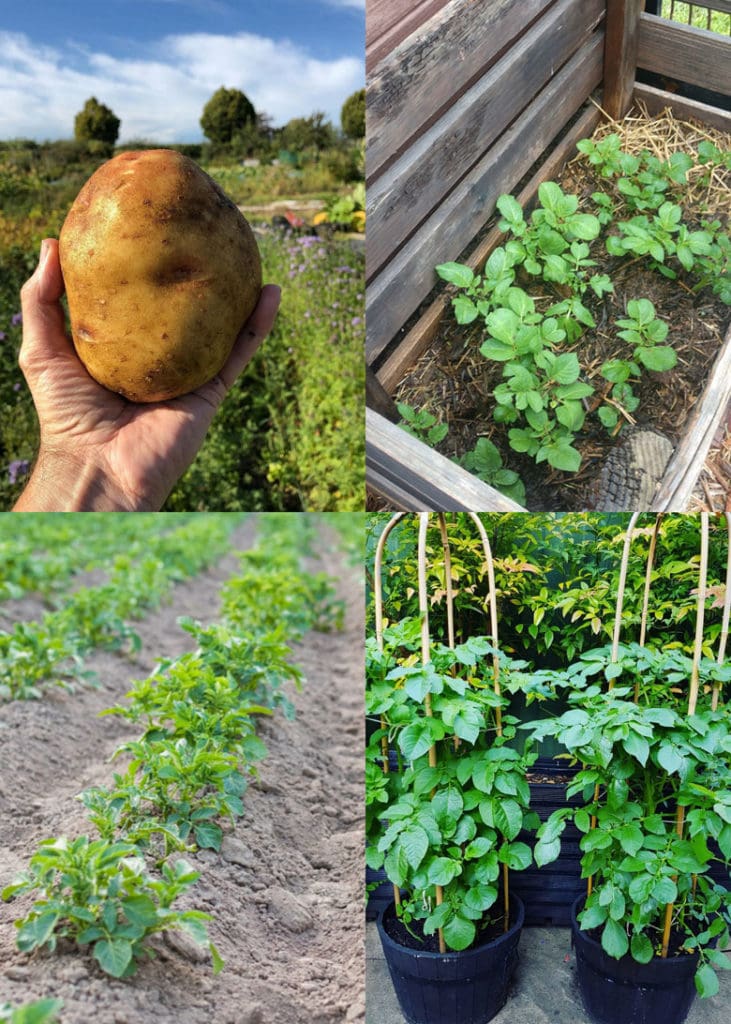
Unearthing Nature’s Hidden Gem: Mastering the Art of Bush Potato Harvesting
Deep within the ancient soils of Australia lies a culinary treasure, a tuber revered by Indigenous communities for millennia and increasingly gaining recognition globally: the bush potato. Far from the cultivated rows of its European cousins, the bush potato (various species within the Solanum genus, particularly Solanum aviculare and Solanum lacunarium) thrives in its wild habitat, offering a unique flavour profile and a fascinating glimpse into traditional foraging practices. Harvesting these elusive tubers is not merely a matter of digging; it’s an intricate dance with nature, requiring knowledge, respect, and a keen understanding of the plant’s life cycle.
This article delves into the multifaceted world of bush potato harvesting, exploring the traditional wisdom passed down through generations, the ecological considerations that guide sustainable practices, and the modern techniques that can be employed. We will also touch upon the rewarding experience of unearthing this nutritious and versatile ingredient.
Understanding the Bush Potato: More Than Just a Tuber

Before embarking on the harvest, it’s crucial to understand the bush potato itself. Unlike the uniform appearance of commercial potatoes, bush potatoes exhibit a greater diversity in size, shape, and colour, often resembling small, irregular lumps. Their skins can range from earthy brown to deep purple, and their flesh can be white, cream, or even tinged with purple.
The plant itself is typically a shrubby perennial, often found in woodlands, open forests, and along watercourses. It produces small, star-shaped flowers, usually in shades of purple or white, followed by small, berry-like fruits. While the fruits are sometimes edible, the true prize lies beneath the soil: the starchy tubers.
The nutritional profile of bush potatoes is impressive. They are a good source of carbohydrates, fibre, and essential vitamins and minerals, including vitamin C, potassium, and magnesium. Their complex carbohydrates are released slowly, providing sustained energy, making them a valuable food source, particularly for those engaged in active lifestyles.
The Sacred Art of Traditional Harvesting
For Indigenous Australians, the harvesting of bush potatoes is steeped in cultural significance and governed by ancient knowledge. These practices are not simply about sustenance; they are about connection to Country, respect for the land, and the continuation of cultural heritage.
Timing is Everything: Traditional harvesting is intrinsically linked to the seasons and the specific growth cycles of different bush potato varieties. Elders and experienced foragers would observe subtle environmental cues – the flowering of certain plants, the behaviour of native animals, the moisture content of the soil – to determine the optimal time for harvest. This often occurs after the rainy season, when the tubers have had ample opportunity to develop and mature. Harvesting too early can yield small, underdeveloped tubers, while harvesting too late might mean they have already begun to decompose or have been consumed by wildlife.
Respectful Extraction: The act of digging is approached with reverence. Tools were traditionally made from natural materials, such as hardened wood or sharpened bone. The digging process would be careful and deliberate, aiming to extract the tuber without damaging the parent plant or its root system. This ensures the plant can regenerate and continue to produce in subsequent seasons. In many traditions, only a portion of the tubers would be harvested, leaving others behind to propagate the species. This sustainable approach is a cornerstone of Indigenous land management.
Community and Knowledge Sharing: Harvesting was often a communal activity, with knowledge about the best locations, the most effective digging techniques, and the preparation methods passed down from generation to generation. This ensured the continued abundance of the resource and fostered a deep understanding of the ecosystem.

Modern Approaches to Bush Potato Harvesting: Balancing Tradition and Practicality
While traditional methods offer invaluable wisdom, modern foragers and enthusiasts can adapt these principles to contemporary harvesting practices. It’s important to note that harvesting from the wild requires a deep understanding of local flora and fauna, and ethical considerations are paramount.
1. Location, Location, Location:
- Research: Before venturing out, extensive research is essential. Identify the specific species of bush potato native to your region. Consult local Indigenous elders or cultural centres for guidance and permission if you are in their traditional Country.
- Habitat Identification: Bush potatoes prefer well-drained soils in semi-arid to temperate environments. Look for them in open woodlands, heaths, and along creek beds. They often grow in association with specific native grasses and shrubs.
- Permission and Regulations: Always ensure you have the necessary permissions to forage on the land. Many areas are protected, and unauthorized harvesting can have legal consequences and significant environmental impacts.
2. Timing Your Harvest:
- Post-Rainy Season: Similar to traditional practices, the best time to harvest is generally after periods of significant rainfall, when the tubers are plump and mature.
- Plant Maturity: Look for the plant to have completed its flowering and fruiting cycle, indicating that the energy has been directed towards tuber development. The foliage may also start to yellow or die back, signalling the plant’s readiness for dormancy.
3. The Gentle Art of Extraction:
- Tools: A sturdy digging stick or a trowel is recommended. Avoid using sharp spades that can easily sever tubers or damage the parent plant. A small hand fork can also be useful for loosening the soil around the tuber.
- Systematic Digging: Begin by carefully probing the soil around the base of the plant. Bush potatoes can grow at varying depths and angles. Work slowly and systematically, expanding your digging area outwards from the stem.
- Locating the Tuber: Feel for the firm resistance of the tuber with your digging tool or your fingers. Once located, gently loosen the soil around it.
- Lifting the Tuber: Carefully lift the tuber from the soil, trying to keep it intact. Inspect the surrounding soil for any missed tubers.
- Replenishment: Just as in traditional practices, consider leaving some tubers behind to ensure the plant’s survival and propagation. You can also replant any smaller, damaged tubers if you wish to cultivate them.
4. Sustainable Harvesting Practices:
- Harvest in Moderation: Never take more than you need. This applies to both personal consumption and any potential commercial ventures.
- Minimise Disturbance: Tread lightly and avoid trampling surrounding vegetation.
- Leave No Trace: Pack out everything you pack in, including any waste.
- Respect Wildlife: Be aware of the presence of native animals and avoid disturbing their habitats.
5. Cultivation and Home Growing:
For those who wish to enjoy bush potatoes without impacting wild populations, cultivation is an excellent option. Some species can be grown from seed or tuber cuttings in well-drained soil in a sunny location. This allows for a sustainable and accessible source of this unique ingredient.
Processing and Preparing Bush Potatoes: Unlocking Their Culinary Potential
Once harvested, bush potatoes require some preparation before they can be enjoyed. Their flavour is often described as earthy, nutty, and slightly sweet, with a texture that can range from firm and waxy to soft and floury depending on the species and cooking method.
Cleaning: Thoroughly wash the harvested tubers to remove all soil. A stiff brush is useful for this.
Preparation Methods:
- Boiling/Steaming: This is a simple and effective way to cook bush potatoes. Boil or steam them until tender, similar to conventional potatoes.
- Roasting: Roasting brings out their natural sweetness and creates a delightful crisp exterior. Toss with olive oil, herbs, and salt before roasting.
- Mashing: Boiled or steamed bush potatoes can be mashed with butter, milk, or cream for a comforting side dish.
- Frying: Sliced or diced bush potatoes can be pan-fried or deep-fried.
- Incorporating into Dishes: Their versatile nature allows them to be used in stews, curries, salads, and baked goods.
Recipes Featuring Bush Potatoes: A Culinary Exploration
Here are a few recipe ideas to inspire your culinary journey with bush potatoes. Remember that quantities and cooking times may need to be adjusted based on the specific type of bush potato you are using.
1. Simple Roasted Bush Potatoes with Rosemary and Garlic
-
Ingredients:
- 500g bush potatoes, washed and halved or quartered if large
- 2 tablespoons olive oil
- 2 sprigs fresh rosemary, leaves stripped and chopped
- 2 cloves garlic, minced
- Salt and freshly ground black pepper to taste
-
Instructions:
- Preheat oven to 200°C (180°C fan/Gas Mark 6).
- In a bowl, toss the bush potatoes with olive oil, chopped rosemary, minced garlic, salt, and pepper until evenly coated.
- Spread the potatoes in a single layer on a baking sheet.
- Roast for 25-35 minutes, or until tender and golden brown, turning halfway through.
2. Creamy Bush Potato Mash
-
Ingredients:
- 500g bush potatoes, washed and peeled (optional)
- 50g butter
- 50ml milk or cream, warmed
- Salt and white pepper to taste
-
Instructions:
- Boil or steam the bush potatoes until very tender.
- Drain thoroughly and return to the pot over low heat for a minute to dry out any excess moisture.
- Mash the potatoes with a potato masher or ricer.
- Add the butter and warmed milk or cream, mixing until smooth and creamy.
- Season with salt and white pepper.
3. Bush Potato and Native Herb Salad
-
Ingredients:
- 300g bush potatoes, boiled until tender, cooled, and diced
- 100g rocket or mixed greens
- 50g crumbled feta cheese (optional)
- 2 tablespoons chopped native herbs (e.g., lemon myrtle, warrigal greens, if available and identified correctly)
- Dressing:
- 3 tablespoons olive oil
- 1 tablespoon lemon juice
- 1 teaspoon Dijon mustard
- Salt and pepper to taste
-
Instructions:
- Whisk together the dressing ingredients in a small bowl.
- In a large bowl, combine the diced bush potatoes, rocket, feta cheese (if using), and chopped native herbs.
- Pour the dressing over the salad and toss gently to combine.
4. Bush Potato and Lentil Stew
-
Ingredients:
- 2 tablespoons olive oil
- 1 onion, chopped
- 2 carrots, diced
- 2 celery stalks, diced
- 300g bush potatoes, peeled and cubed
- 150g brown or green lentils, rinsed
- 1 litre vegetable or chicken stock
- 1 teaspoon dried thyme
- Salt and pepper to taste
-
Instructions:
- Heat olive oil in a large pot or Dutch oven over medium heat. Add the onion, carrots, and celery and sauté until softened, about 5-7 minutes.
- Add the cubed bush potatoes, rinsed lentils, stock, and thyme. Bring to a boil.
- Reduce heat, cover, and simmer for 30-40 minutes, or until the lentils and potatoes are tender.
- Season with salt and pepper. Serve hot.
Conclusion: A Sustainable Harvest for a Richer Experience
Harvesting bush potatoes is a journey that connects us to the land, to history, and to the incredible biodiversity of Australia. By understanding and respecting the plant and its environment, and by adopting mindful harvesting techniques, we can ensure the continued abundance of this valuable resource. Whether you are a seasoned forager or a curious culinary adventurer, the act of unearthing and preparing bush potatoes offers a unique and deeply rewarding experience, a true taste of nature’s hidden treasures.

